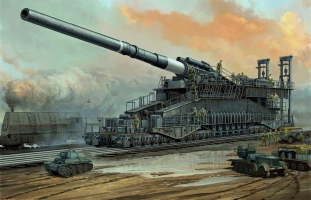Top 10 Most Expensive Accidents In History
Humans have always been prone to accidents throughout history. Injury and death are the biggest lost after those accidents. Property losses, on the other hand, ... read more...can be severe and crippling to a company. And below are the most expensive accidents in history.
-
The most expensive accident ever goes to The Chernobyl. The Chernobyl disaster was a nuclear accident that occurred on Saturday, April 26, 1986 when the Chernobyl nuclear power plant in Pripyat, Ukraine (then part of the Soviet Union) exploded at a reactor response number 4. It is considered the worst nuclear disaster in history in terms of both costs and casualties. Due to the lack of walls, the fallout cloud from the plant spread to much of the western Soviet Union, Eastern and Western Europe, Scandinavia, Great Britain, and the eastern United States. Large areas of Ukraine, Belarus and Russia were severely polluted, leading to the evacuation and resettlement of more than 336,000 people. About 60% of the radioactive cloud fell on Belarus. According to a 2006 report by TORCH, half of the radiation fell outside the three Soviet republics. This disaster emitted four hundred times more radiation than the atomic bomb dropped on Hiroshima.
The Chernobyl disaster was regarded as the worst socio economic disaster in history. Ukraine is poisoned in 50 percent of its territory. There should be 200,000 people evacuated and relocated, with 1.7 million people directly affected by the crisis. About 125,000 people have perished as a result of Chernobyl, including those who died of cancer years later. Nobody knows the exact cost of the world's worst nuclear disaster. Cleaning, transmigration, and victim compensation are all estimated to cost $200 billion. A new steel shelter for the Chernobyl nuclear power facility alone will cost $2 billion.
Total loss: $200 billion
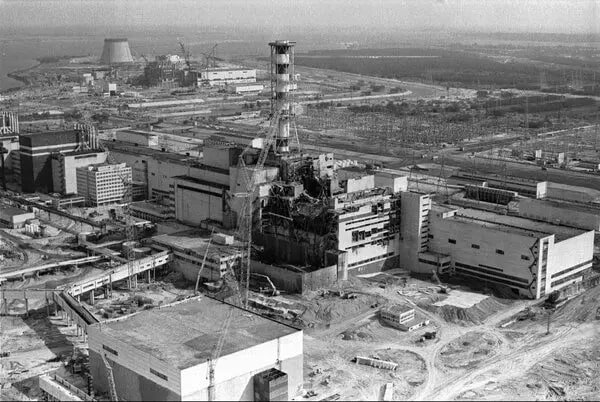
Photo: The New York Times 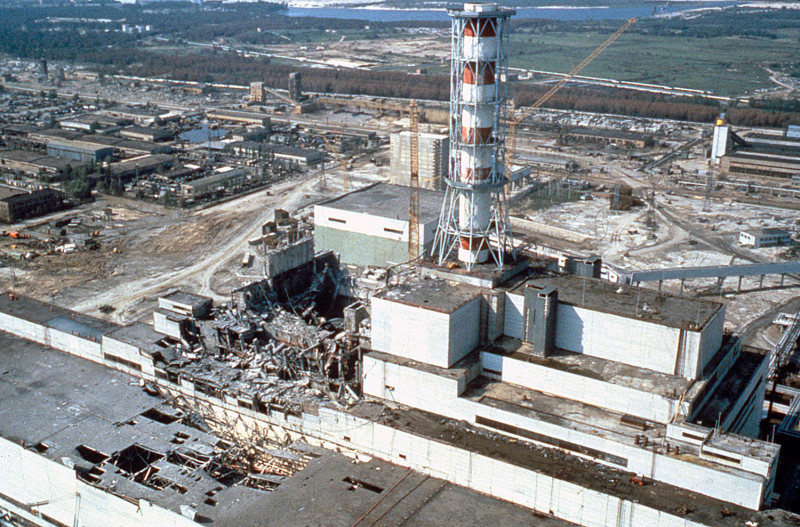
Photo: The Atlantic -
The Space Shuttle Columbia tragedy occurred on February 1, 2003, when the Space Shuttle Columbia (OV-102) destroyed as it reentered the atmosphere, killing all seven members of the crew. After the Challenger catastrophe in 1986, this was the second tragic event in the Space Shuttle program.
The CAIB released their report on the accident on August 26, 2003. The report confirmed that insulating foam shed during launch produced a break in the leading edge of the left wing, which was the immediate cause of the disaster. The investigation also looked into the underlying organizational and cultural factors that contributed to the accident. NASA's decision-making and risk-assessment systems were heavily criticized in the report. It was decided that the organizational structure and processes were so defective that a safety compromise was inevitable, regardless of who was in charge of critical decision-making positions.
According to the American Institute of Aeronautics and Astronotika Sciences, the total cost of accidents (excluding replacement of round-trip transportation) is projected to be 13 billion dollars.
Total loss: $13 billion

Photo: Dallas Morning News 
Photo: NBC News -
The Prestige oil spill occurred off the coast of Galicia, Spain, in November 2002, when the 26-year-old, structurally defective oil tanker MV Prestige sank with 77,000 tonnes of heavy fuel oil on board. On November 13, a tank blew up during a storm, and the French, Spanish, and Portuguese governments refused to let the ship land. On November 19, 2002, the ferry drowned around 210 kilometers off the coast of Galicia. It is anticipated that 60,000 tonnes of heavy fuel oil, or 67,000 m3 (17.8 million US gal), was spilled.
Thousands of kilometers of shoreline and over a thousand beaches along the Spanish, French, and Portuguese coasts were polluted, and the local fishing economy was severely harmed. The Prestige oil spill is the worst environmental calamity in both Spain and Portugal's history. Because of the higher water temperatures, the volume of oil released was greater than the Exxon Valdez catastrophe, and the toxicity was regarded higher.
The governments of Spain, Portugal, and France have all refused to let the crippled ship dock. After splitting in half, the ship spills 20 million gallons of oil into the water. The overall cost of cleanup is estimated to be around $ 12 billion, according to a report by the Council of Pontevedra Economist.
Total loss: $12 billion
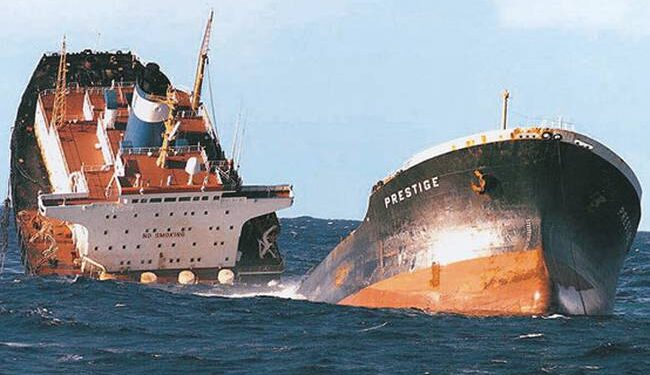
Photo: Safety4sea 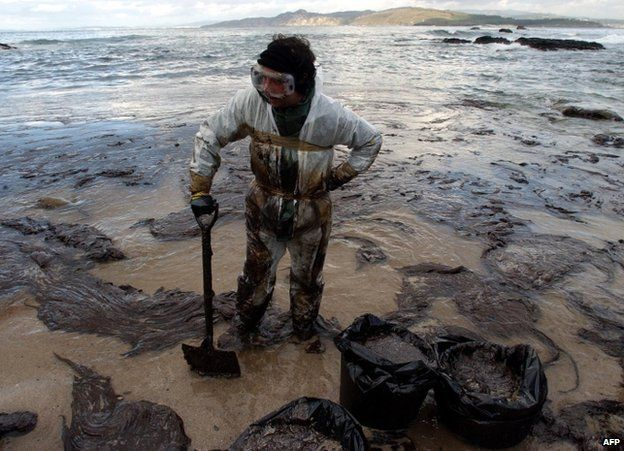
Photo: BBC -
The Space Shuttle Challenger Explosion occurred on January 28, 1986, shortly after the launch of the US space shuttle Challenger from Cape Canaveral, Florida, and lost the lives of seven astronauts. It was the first fatal accident involving an American spacecraft in flight.
The failure of two redundant O-ring seals in a joint in the Space Shuttle's right solid rocket booster caused the disaster. The launch's record-low temperatures weakened the rubber O-rings' flexibility, decreasing their capacity to seal the joints. Shortly after liftoff, the broken seals caused a breach in the joint, allowing pressurized gas from the SRB to seep and burn through the wall to the neighboring external fuel tank. This caused the right-hand SRB's aft attachment to separate, causing it to fall into the external tank, resulting in the external tank's structural failure and explosion. Aerodynamic forces split up the orbiter, which included the crew compartment, after the explosion.
The Space Shuttle replacement cost $2 billion ($4.5 billion in today's money). Investigation, problem-solving, and equipment replacement costs were $ 450 million from 1986 to 1987 ($ 1 billion today), making it become one of the most expensive accidents ever.
Total loss: $5.5 billion
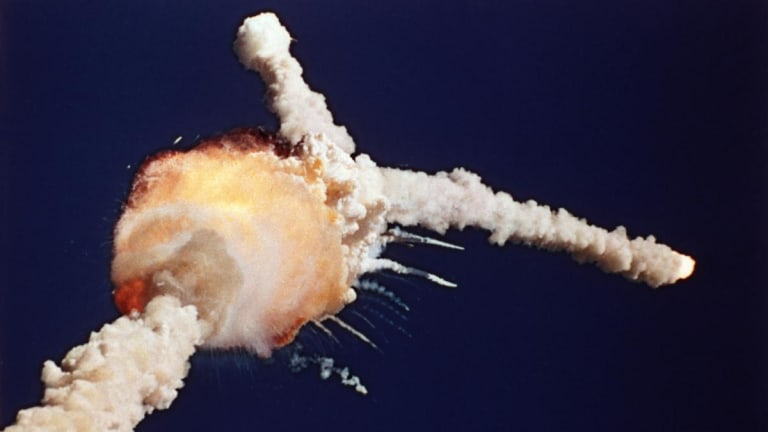
Photo: history.com 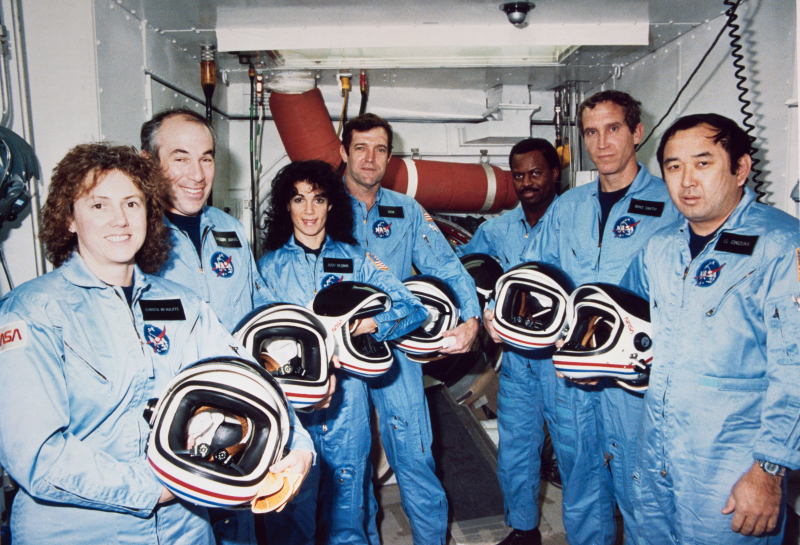
Photo: NASA -
The Piper Alpha Oil Rig, which occurred off the coast of Aberdeen, is the deadliest oil rig accident in history. Piper Alpha Oil was the world's largest oil producer at the time, producing 317,000 barrels of oil per day.
On July 6, 1988, technicians removed and examined safety valves that were critical in preventing a dangerous build-up of liquid gas as part of routine maintenance. A total of 100 identical safety valves were examined. Unfortunately, one of them was not replaced since the technician made a mistake. At 10 p.m. on the same day, a technician began pressing the button that started the horrible accident by moving the liquid and most expensive gas pumps in the world. The 300-foot platform was enveloped in flames in less than two hours. It eventually caved in, killing 167 people and causing $3.4 billion in losses.
There is debate over whether there was enough time to conduct a more effective emergency evacuation. The key issue was that when the initial explosion damaged the control room, most of the individuals with the authority to order an evacuation were killed. This was due to the lack of blast walls in the platform design. Another cause was that the neighboring connected platforms Tartan and Claymore continued to feed gas and oil to Piper Alpha until the second explosion, when its pipeline collapsed in the heat. Even when they could see Piper Alpha burning, their operations teams did not think they had the power to turn off production.
Total loss: $3.4 billion
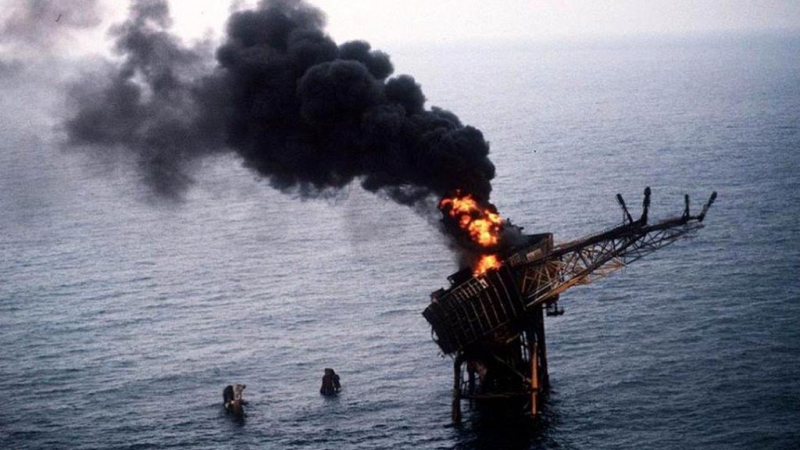
Photo: BBC 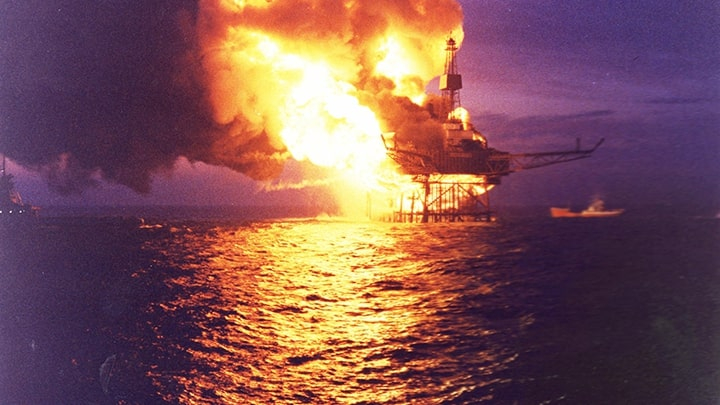
Photo: Oil & Gas IQ -
On March 24, 1989, the Exxon Valdez, an oil tanker owned by the Exxon Shipping Company, spilled 11 million gallons of crude oil into Alaska's Prince William Sound, resulting in a man-made disaster. Until the Deepwater Horizon oil leak in 2010, it was the worst oil spill in US history. Hundreds of thousands of seabirds, otters, seals, and whales died as a result of the Exxon Valdez oil spill, which covered 1,300 miles of shoreline. Some patches of crude oil have remained in some sites nearly 30 years later. Following the incident, the Exxon Valdez was renamed and operated as an oil tanker and ore carrier for more than two decades.
Investigators eventually discovered that the captain of the Exxon Valdez, Joseph Hazelwood, had been drinking and had permitted an unlicensed third mate to steer the big ship. Hazelwood was acquitted of felony charges in March 1990. He was found guilty of a single count of misdemeanor carelessness and sentenced to 1,000 hours of community service.
The Exxon Valdez oil spill is regarded as one of the most destructive environmental disasters perpetrated by humans. The losses incurred were enormous. Exxon spent $2.5 billion on the cleanup.
Total loss: $2.5 billion
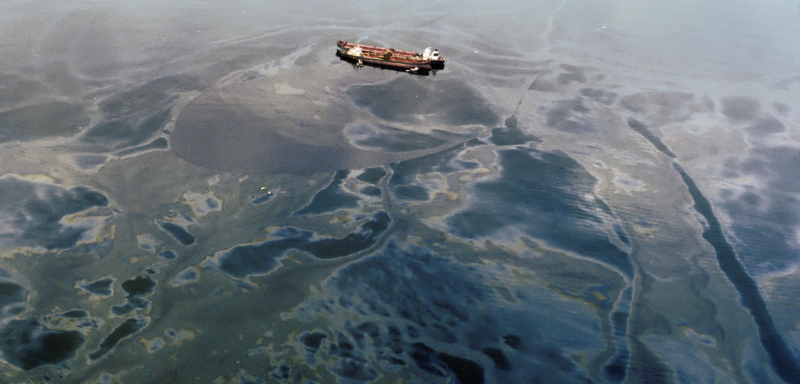
Photo: Hakai Magazine 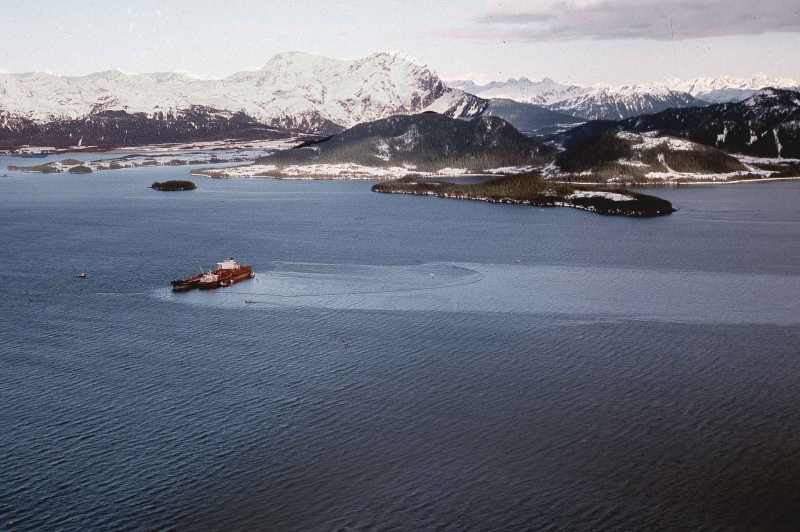
Photo: E-tech oil-spill.com -
B-2 Bomber Crash is definitely one of the most expensive accidents ever. The B-2 Stealth bomber crashed on the runway shortly after takeoff from Andersen Air Force Base in Guam on February 23, 2008. Major Ryan Link and Captain Justin Grieve, the bomber's two-officer crew, were unable to control the bomber and ejected as one of its wingtips made contact with the ground, surviving the crash. The plane veered off the track, slipping and colliding with the B-2. The pilot miraculously survived.
The B2 crashed when "heavy, lashing showers" forced moisture to infiltrate skin-flush air-data sensors, according to the investigation's results. The sensors' data is utilized to calculate a variety of parameters, including airspeed and altitude. The flight-control computers computed improper aircraft angle of attack and airspeed because three pressure transducers failed to work due to moisture inside the devices, not a maintenance issue. The aircraft rotated at 12 knots (22 km/h; 14 mph) slower than reported due to incorrect airspeed data on cockpit displays.
Total loss: $1.4 billion
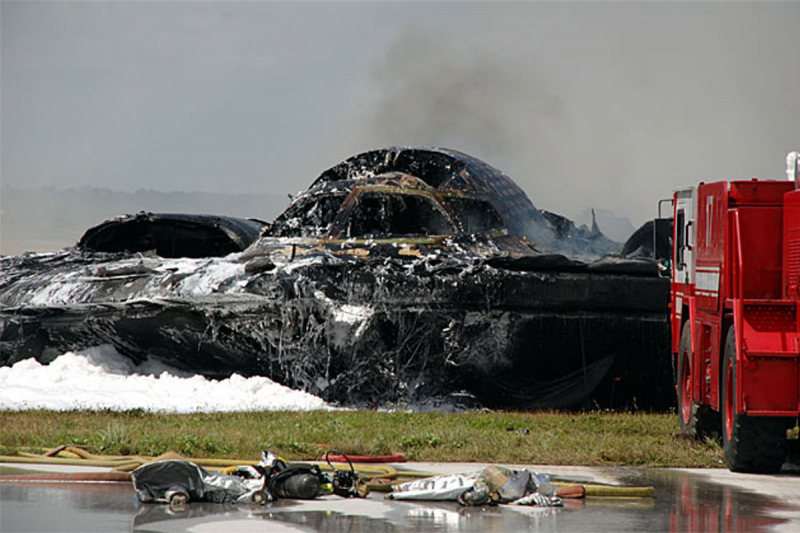
Photo: Air Data News 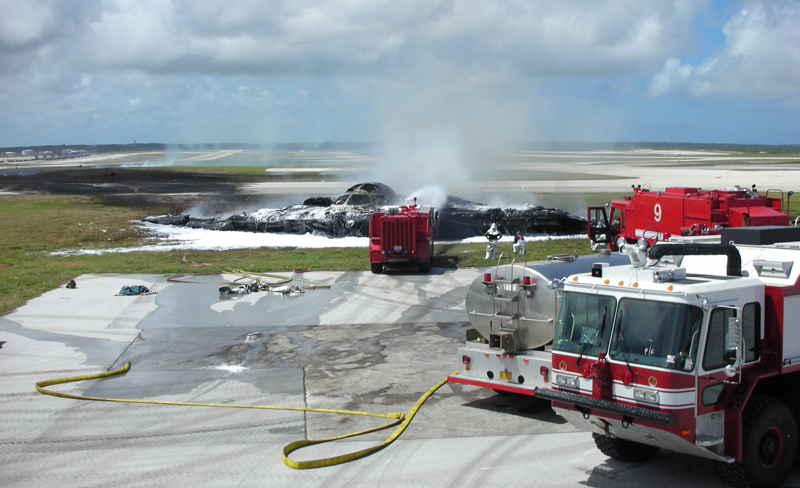
Photo: Wikipedia -
The Chatsworth train collision happened on September 12, 2008, in the Chatsworth section of Los Angeles, California, when a Union Pacific freight train and a Metrolink commuter train collided head-on. The train collision was one of the worst in California history, with 25 persons killed. Metrolink suffered a $500 million loss as a result of this tragic miscalculation.
The Chatsworth train collision occurred on a curved portion of single track approximately east of Stoney Point on the Metrolink Ventura County Line. The Metrolink train raced past a red signal before entering a portion of single track where the opposing freight train had been given the right of way by the train dispatcher, according to the National Transportation Safety Board (NTSB), which investigated the cause of the crash. The NTSB blamed the incident on the Metrolink train's engineer, Robert M. Sanchez, 46, who was distracted by text texts he was sending while on duty.
The city and county of Los Angeles responded with a major emergency response, but the nature and depth of physical injuries exhausted the available resources. Officer Tom Gustofson, the first to arrive, characterized the catastrophe as "beyond human description." The Los Angeles Police Department requested California Emergency Mobile Patrol Search and Rescue (CEMP) as a first responder (LAPD). With twenty-five people killed, this was Metrolink's bloodiest accident. Many survivors had to stay in the hospital for a long time.
Total loss: $500 million
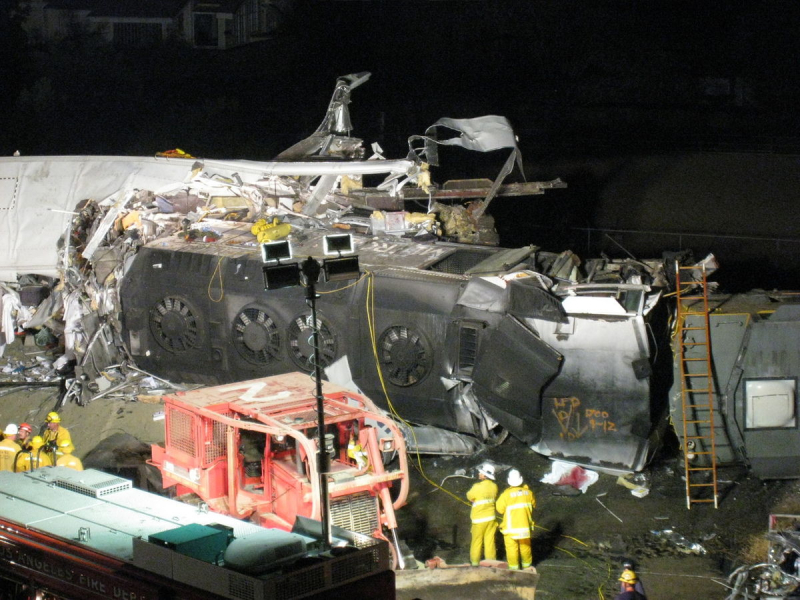
Photo: Wikipedia 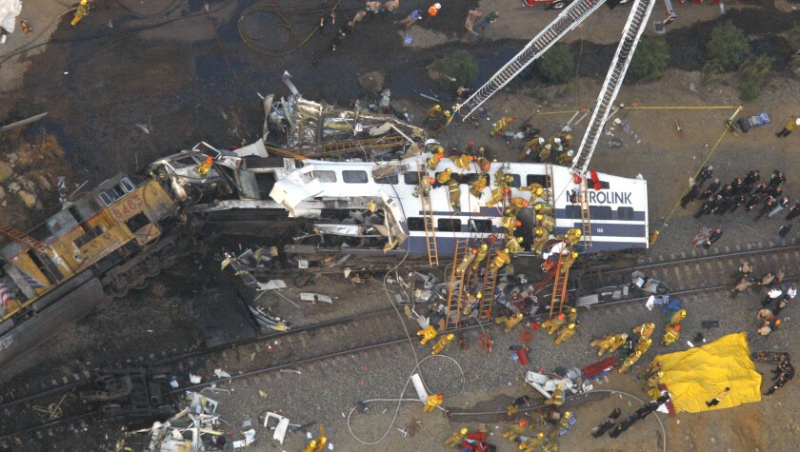
Photo: Los Angeles Times -
On August 26, 2004, on the Wiehltal Bridge in Germany, a passenger automobile skidded on wet asphalt. The car collided with a tanker truck carrying 32,000 liters of gasoline and fuel. The guard rails were only designed to stop cars weighing up to 13 tons and were unable to hold the truck, which exploded after falling 30 meters off the A 4 Autobahn. . Following the explosion, a large fire broke out, with temperatures estimated to be around 1200°C. The truck driver was killed, and the bridge's load-bearing capacity was shattered, forcing it to close to traffic.
The bridge will cost $318 million to replace after temporary repairs cost $40 million. This was by far the most expensive accident in the history of the Federal Republic of Germany.
Total loss: $358 million
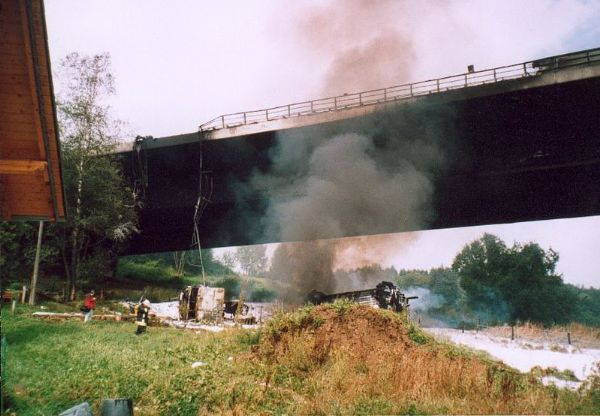
Photo: Wordpress 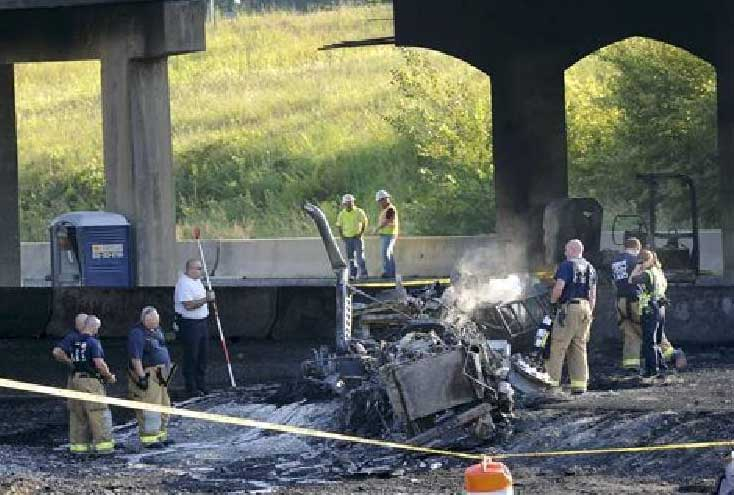
Photo: MostFamousList -
The Titanic disaster is perhaps the most famous accident in history. On 14 April, Titanic received six sea ice warnings, but she was still moving at 22 knots when her lookouts spotted the iceberg. The ship took a glancing blow due to her inability to turn quickly enough, which bent her starboard side and exposed six of her sixteen compartments to the sea. Titanic was built to stay afloat even after four of her forward compartments were flooded, but the crew quickly realized the ship would sink. As the passengers were loaded into lifeboats, they deployed distress flares and radio (wireless) communications to summon assistance.
On April 15, 1912, the Titanic sank after hitting an iceberg on its maiden journey from Southampton, UK to New York City, US. More than 1,500 people died when the Titanic sank in one of the greatest peacetime maritime disasters in modern history. It is regarded as one of the most opulent ocean liners ever built. The Titanic was built for $7 million. In today's money, that's $150 million.
The lack of lifeboats, inadequate procedures, and unfair treatment of third-class passengers during the evacuation startled the world and sparked considerable criticism. Following investigations, the International Convention for the Safety of Life at Sea was established in 1914, recommending significant reforms to maritime legislation.
Total loss: $150 million
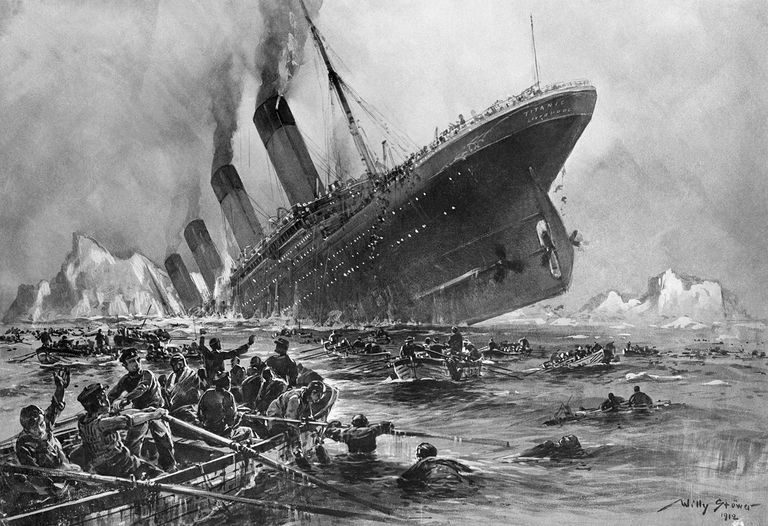
Photo: Wilson Lawyers 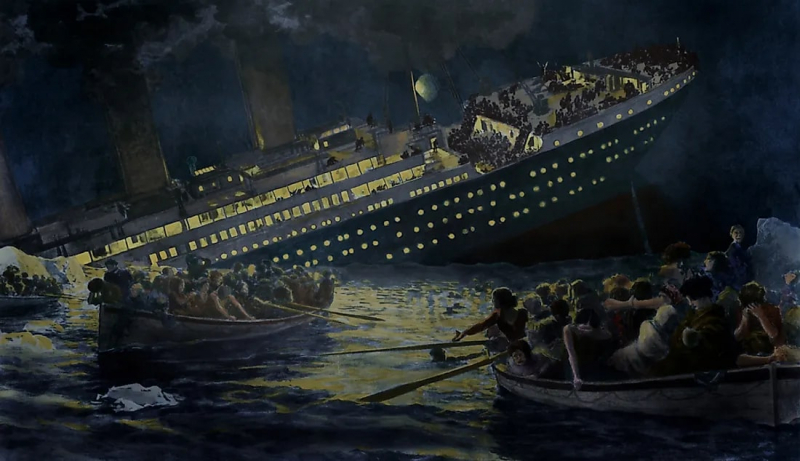
Photo: World Atlas















